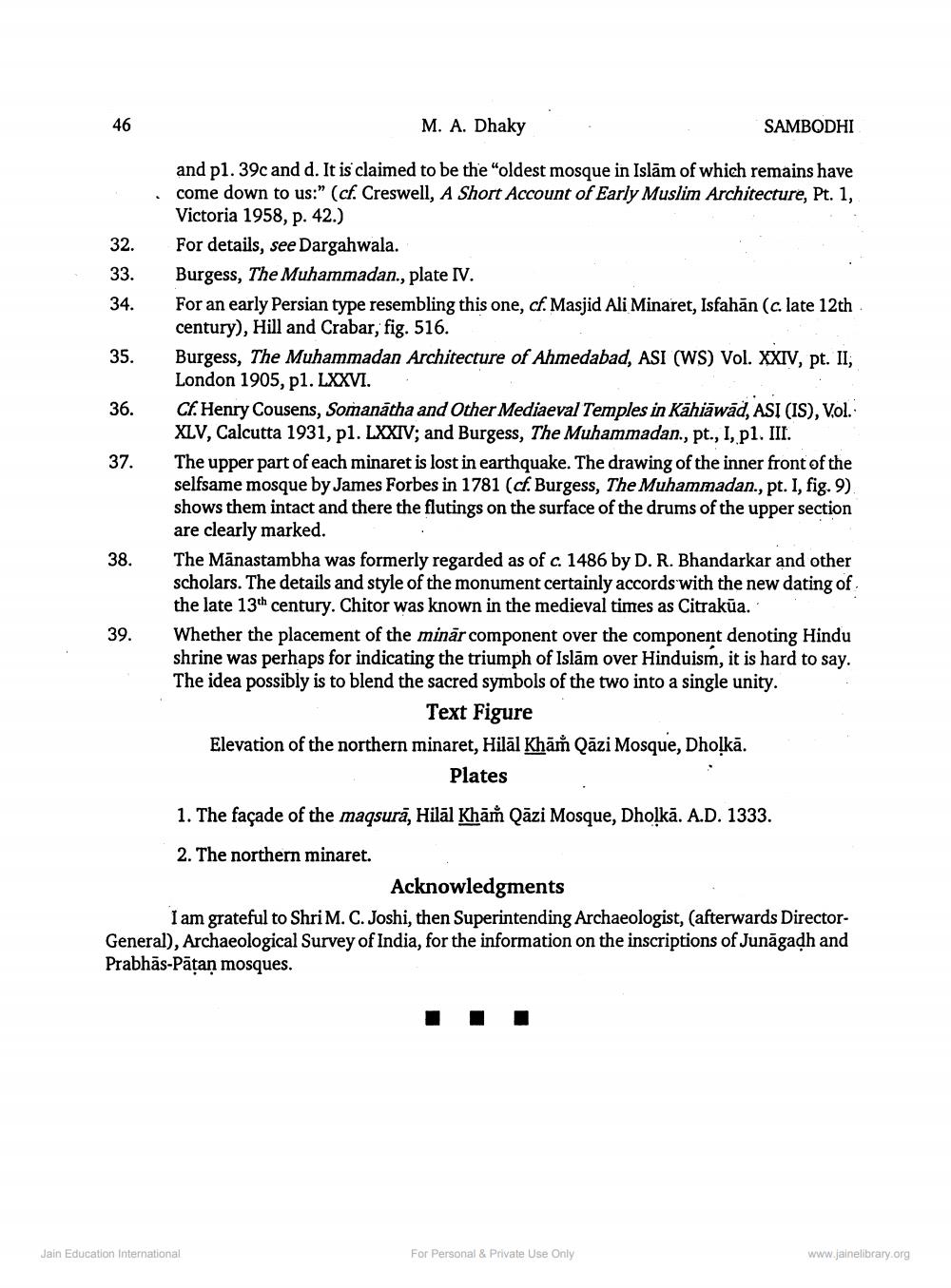________________
M. A. Dhaky
SAMBODHI
and p1.39c and d. It is claimed to be the "oldest mosque in Islām of which remains have come down to us:" (cf. Creswell, A Short Account of Early Muslim Architecture, Pt. 1, Victoria 1958, p. 42.) For details, see Dargahwala. Burgess, The Muhammadan., plate IV. For an early Persian type resembling this one, cf. Masjid Ali Minaret, Isfahan (c. late 12th century), Hill and Crabar, fig. 516. Burgess, The Muhammadan Architecture of Ahmedabad, ASI (WS) Vol. XXIV, pt. II; London 1905, p1. LXXVI. Cf. Henry Cousens, Somanātha and Other Mediaeval Temples in Kähiāwād, ASI (IS), Vol. XLV, Calcutta 1931, p1. LXXIV; and Burgess, The Muhammadan., pt., I, pl. III. The upper part of each minaret is lost in earthquake. The drawing of the inner front of the selfsame mosque by James Forbes in 1781 (cf. Burgess, The Muhammadan., pt. I, fig. 9). shows them intact and there the flutings on the surface of the drums of the upper section are clearly marked. The Mānastambha was formerly regarded as of c. 1486 by D. R. Bhandarkar and other scholars. The details and style of the monument certainly accords with the new dating of the late 13th century. Chitor was known in the medieval times as Citrakūa. Whether the placement of the minār component over the component denoting Hindu shrine was perhaps for indicating the triumph of Islām over Hinduism, it is hard to say. The idea possibly is to blend the sacred symbols of the two into a single unity.
Text Figure Elevation of the northern minaret, Hilal Khāṁ Qāzi Mosque, Dholkā.
Plates
1. The facade of the maqsura, Hilal Khāṁ Qāzi Mosque, Dholkā. A.D. 1333.
2. The northern minaret.
Acknowledgments I am grateful to Shri M. C. Joshi, then Superintending Archaeologist, (afterwards DirectorGeneral), Archaeological Survey of India, for the information on the inscriptions of Junāgadh and Prabhās-Pātan mosques.
Jain Education International
For Personal & Private Use Only
www.jainelibrary.org




